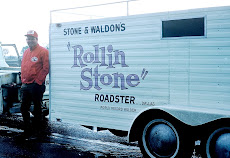



I have a new model to share with you...It is
a World War II P-47 Thunderbolt. It was made by
the Republic Aircraft Company and was in such
demand by the U.S. Government the company had
to build a second plant to handle manufacturing of
the P-47. It was the heaviest, longest, and most
powerful single engine fighter of WWII. The P-47
had eight 50-caliber machine guns (four on each
wing) and could carry up to 500 pounds of bombs.
Although not able to climb and maneuver with the
Messerschmits and Spitfires, the Thunderbolt could
out dive any WWII plane because of its weight. The
modern day fighter A-10 Thunderbolt gets its name
from this vintage fighter,..but the A-10 is better
known as the 'Warthog'.
Both the real P-47 and my model are painted with
the strips of the Normandy invasion. The allies painted
the strips on all friendly planes so they could readily
be seen by anti-aircraft gun batteries. Here is more on
the P-47.
The Thunderbolt was the fastest-diving American aircraft of the war—it could reach speeds of 550 mph (480 kn, 885 km/h). Major Robert S. "Bob" Johnson described the experience of diving the big fighter by writing, "the Thunderbolt howled and ran for the earth".[18] Some P-47 pilots claimed to have broken the sound barrier, but later research revealed that due to the pressure buildup inside the pitot tube at high speeds, airspeed readings became unpredictably exaggerated. But German pilots learned soon to avoid diving with a Thunderbolt. Kurt Buehligen, a high-scoring German fighter ace with 112 victories, recalled:
"The P-47 was very heavy, too heavy for some manoeuvres. We would see it coming from behind, and pull up fast and the P-47 couldn’t follow and we came around and got on its tail in this way." [19]
The arrival of the new Curtiss paddle-blade propeller significantly increased climb rate at lower altitudes, and came as a shock to German pilots who had resorted to steep climbs to evade pursuit by the P-47.[14] Other positive attributes included the P-47's ruggedness; it could sustain a large amount of damage and still be able to get its pilot back to base.[20] With eight .50 in (12.7 mm) machine guns, the P-47 did not lack for firepower. German aircraft caught in a well-aimed burst tended to fly apart from the impact of so many armor-piercing projectiles.



No comments:
Post a Comment